Index


Review: Silence and Sweet-Spot price/performance
Today we’ll take a closer look at the recently introduced Gainward GTX 760 2GB with the Phantom cooler. The GTX 760 Phantom is a factory overclocked card, with bumped up GPU and memory frequencies, yet thanks to the Phantom cooler it is supposed to be quite a bit quieter than the reference card.
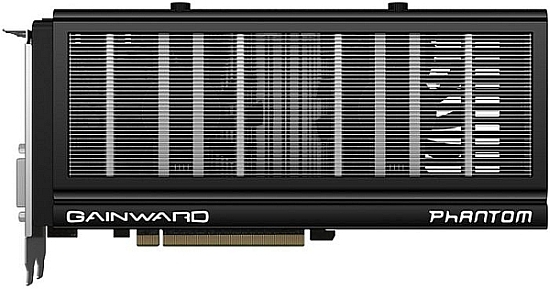
Note that the cooler is three slots wide and as such it may not be compatible with small or cramped cases. However it is good to know that Gainward’s portfolio includes other GTX 760 graphics cards based on the reference design, with the dual-slot cooler and blower style fan.
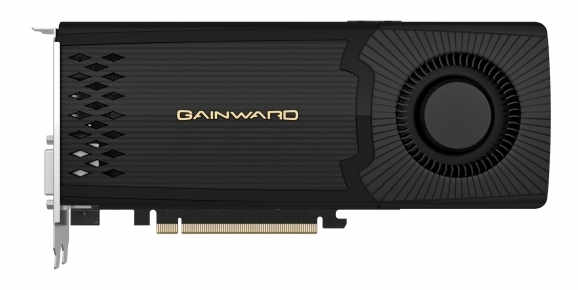
The GTX 760 was designed with gamers on a budget in mind. It is supposed outpace the old GTX 660 Ti and it is basically its direct replacement. The Phantom’s GPU is clocked at 1072MHz, or 92MHz over the reference cock. The Boost clock is 1137MHz, while the reference card boost clock is 1033MHz. Gainward also bumped the GDDR5 clock from 1502MHz to 1550MH, effectively 6200MHz. It is worth noting that cards with overclocked memory are becoming somewhat of a rarity these days. Most AIBs are choosing to overclock the GPU and not tinker with the memory. However, in many scenarios GPU overclocking does not offer good results if the memory clock is not upped as well.
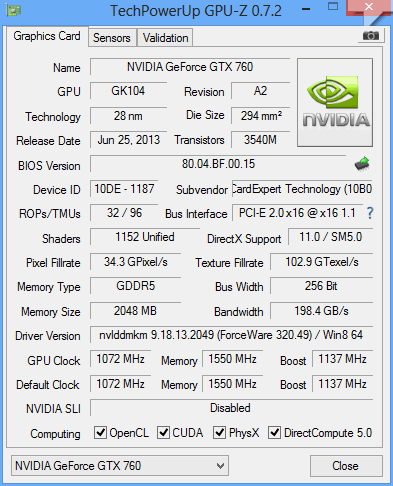
At the heart of the GeForce GTX 760 lies the same GK104 GPU that is used in the GeForce GTX 770, but remember that the GK104 GPU is used on GTX 690/680/670/660Ti cards as well.
The GTX 760 has 1152 CUDA cores, while the GTX 660 Ti boasts 1334. The GTX 760 ended up about 6-8 percent faster than the GTX 660 Ti, but where is all that new-found speed actually coming from? It is safe to assume that the extra performance comes from higher clocks. The GTX 760 is stock clocked at 980MHz, while the Boost clock is 1033MHz, whereas the GTX 660 Ti is clocked at 915MHz and the Boost clock is 980MHz.
The bandwidth is somewhat higher as well, as the GTX 660 Ti features a 192-bit memory bus, while the GTX 760 has a 256-bit bus. On the whole the GTX 760 seems to be designed for 1080p gaming on a budget, and it is also direct threat to the ageing GTX 670.
The standard memory configuration for the GTX 760 is 2GB of GDDR5 memory, but some Nvidia partners offer 4GB cards as well. The GTX 760 has a 170W TDP, compared to 150W TDP for the GTX 660 Ti and 170W TDP for the GTX 670.
Following the introduction of the GTX 760, Nvidia’s complete Geforce 7xx/6xx lineup consists of the following cards:
Geforce GTX TITAN (GK110)
GeForce GTX 780 (GK110)
Geforce GTX 690 (2xGK104)
Geforce GTX 770 (GK104) Geforce GTX 680 (GK104)
Geforce GTX 670 (GK104)
Geforce GTX 760 (GK104) Geforce GTX 660 Ti (GK104)
Geforce GTX 660 (GK106)
Geforce GTX 650 Ti BOOST (GK106)
Geforce GTX 650 Ti (GK106)
Geforce GTX 650 (GK107)
Geforce GT 640 (GK107)
Geforce GT 630 (re-branded Geforce GT 440)
Geforce GT 620
In the box you’ll find:
User Guide
Quick Installation Guide
Driver DVD
A small note about PCIE 3 compatibility
HDMI to DVI Dongle
DVI to VGA Dongle
1x molex to 6-pin Power Adapter
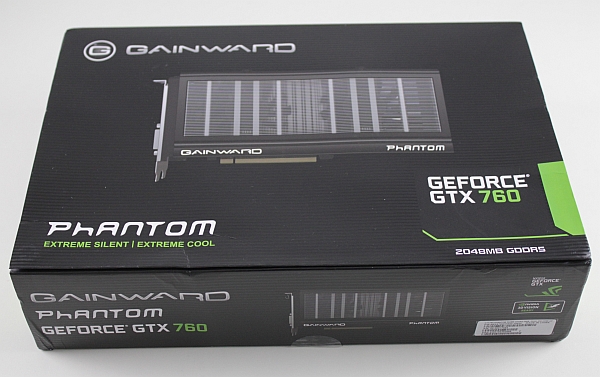
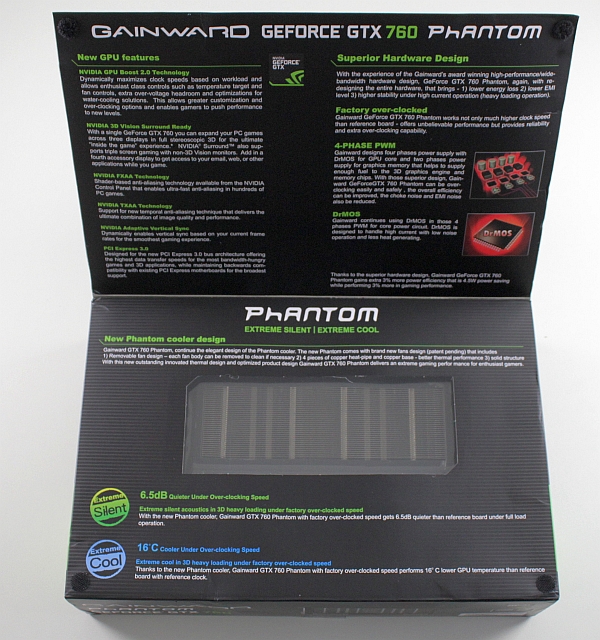
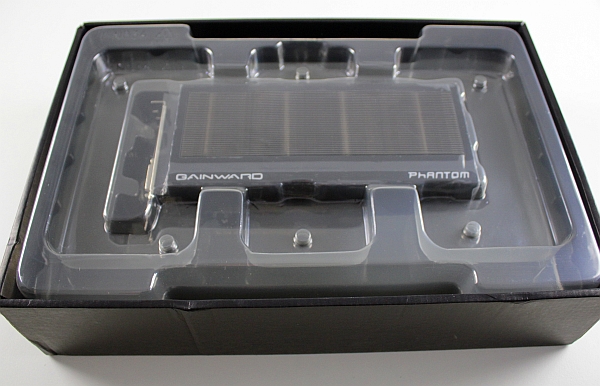
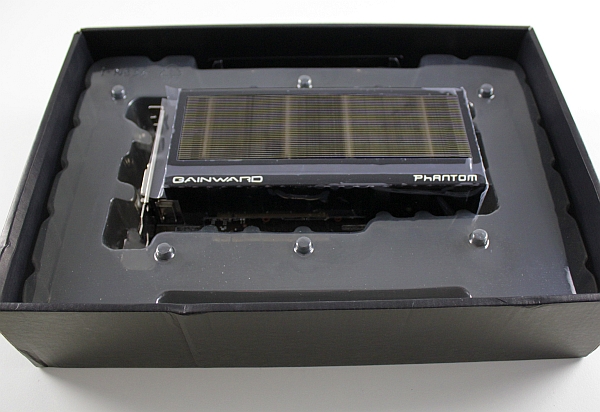
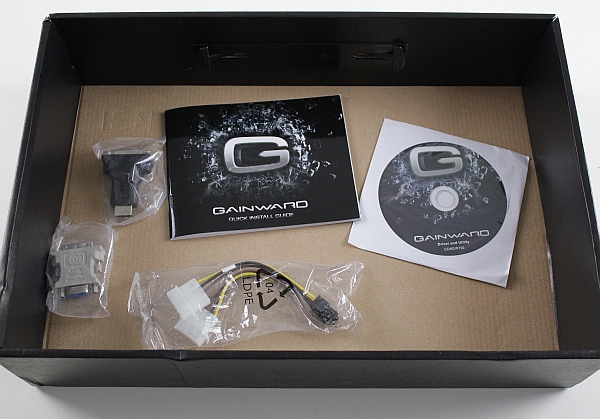
The reference GTX 760 cooler is very similar to the stock cooler used on GTX 660 and GTX 670 cards. Gainward on the other hands chose to equip its top GTX 760 with the Phantom cooler which is pretty good, as it doesn’t compromise on noise over performance. However, it is also pretty big and takes up three slots.
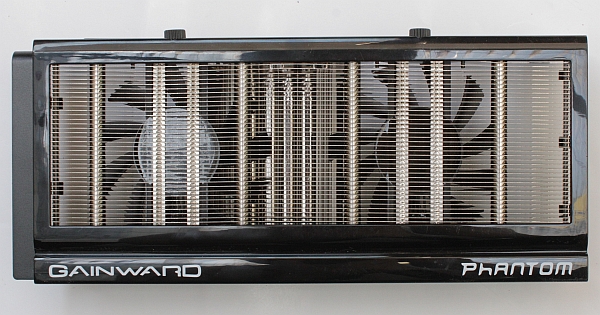

Gainward claims the Phantom cooler is about 6.5dB quieter than reference board under full load, despite the fact that it is factory overclocked. In addition, the card should be up to 16 degrees Celsius cooler than the reference card. We’ll put these claims to the test later in the review.
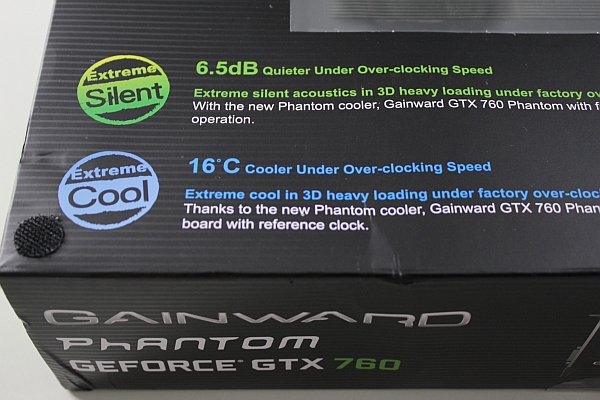
The fans can be easily removed much like hard drives from a hot swap drive bay. You just need to undo a single screw and yank the fan out, no hassle.
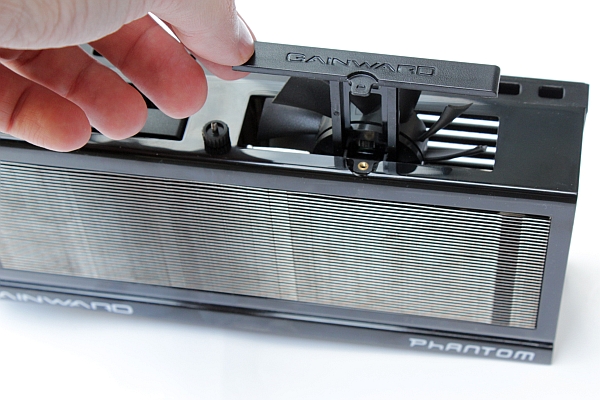
The trick is in the integrated power connector inside the bay. You can’t fit the fan upside down as it uses a set of rails to guide it down to the connector for a perfect fit. Two fans and a ton of fins attract a lot of dust, hence we really like this approach, as it makes cleaning the cooler much easier. If you decide to take off a fan from most cards, it will void the warranty. On the Phantom it won’t, and it makes maintenance much easier.
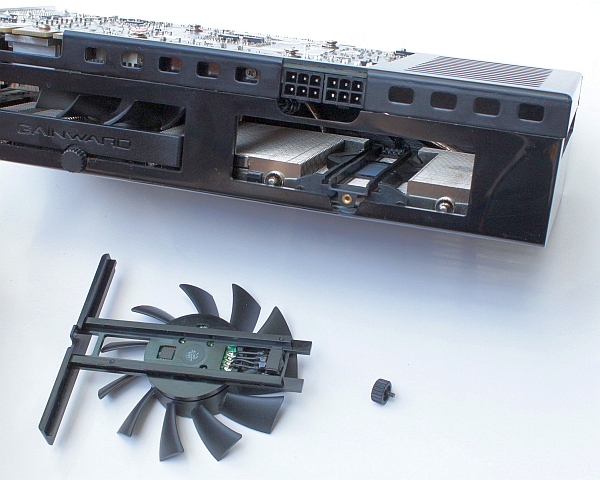
Gainward uses Power Logic PLA8015S12HH fans with a maximum RPM of about 3,500. The same Power Logic fan was used in the GTX 780/770/680/670/660 Phantom and GTX 580 Phantom cards. Both fans share the same 4-pin power connector. Setting the RPM manually is a breeze using Gainward’s ExperTool or any other popular utility like MSI Afterburner or PrecisionX.
In our experience, the loudness of Power Logic fans depends on the efficiency of the heatsink. A well designed heatsink makes their life easier, and the decision to use two fans should result in more airflow at lower RPMs. Aside from the GPU, the fans are in charge of cooling hot components on the PCB too..
Removing the whole cooler from the card is a breeze and it can be done by removing four spring-loaded screws from the card’s back side, but this will void the warranty.
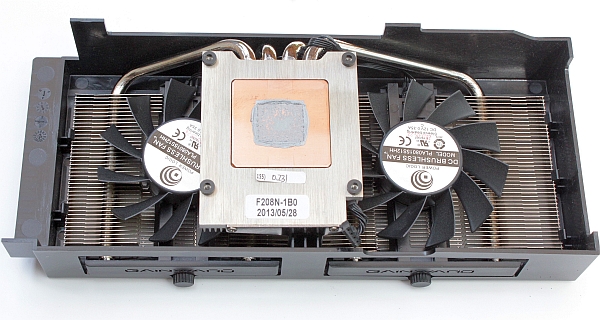
New Phantom cooler employs a four-heatpipe system to transfer heat between the cooler base and the heatsink. The 6mm heatpipes are curved a bit better than in previous Phantom coolers, so they don’t protrude from the cooler at any point. The welds between heatpipes and aluminum fins are accurate and look like they’ve been done very well indeed.
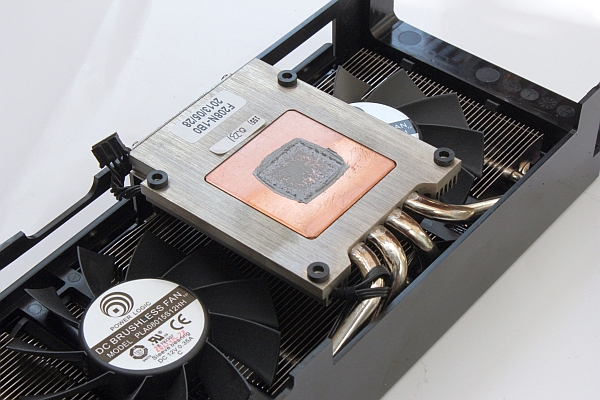
Gainward’s GTX 770 Phantom is definitely a looker. The Phantom’s fans are hidden behind the heatsink so it may trick users into thinking that it’s a passive cooler. Still, if you peek through the heatsink fins, you’ll see the silhouettes of the fans.
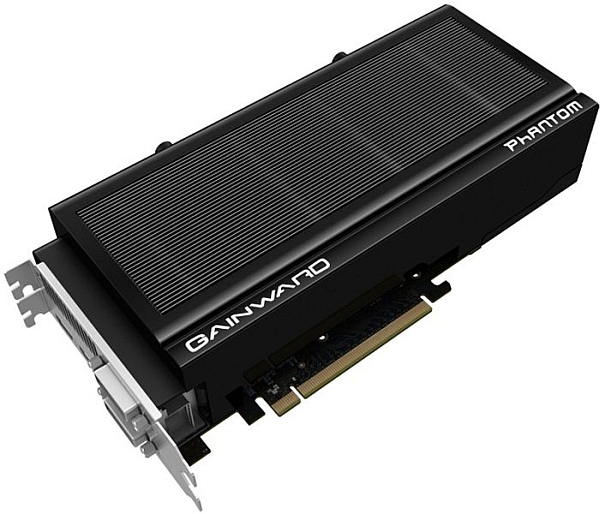
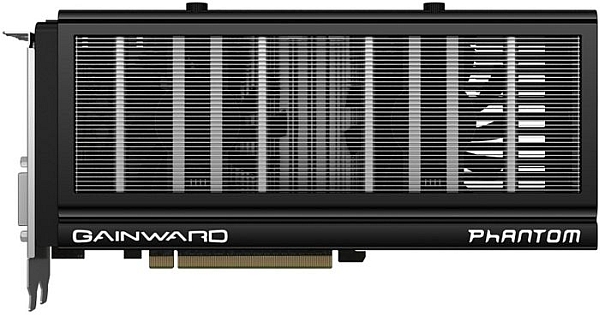
Bear in mind that we are dealing with a three-slot cooler.
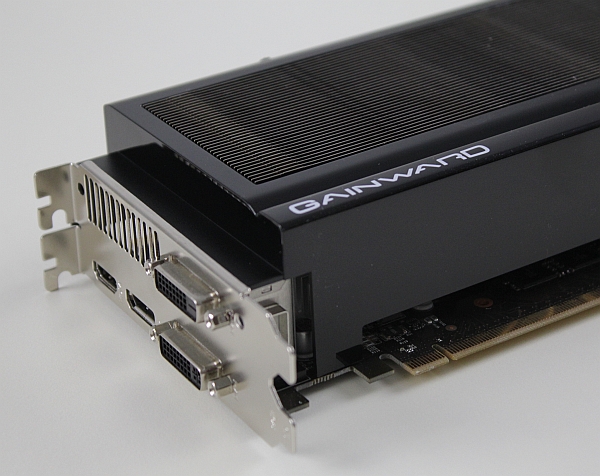
In the following pictures you can see what a reference GTX 760 looks like.
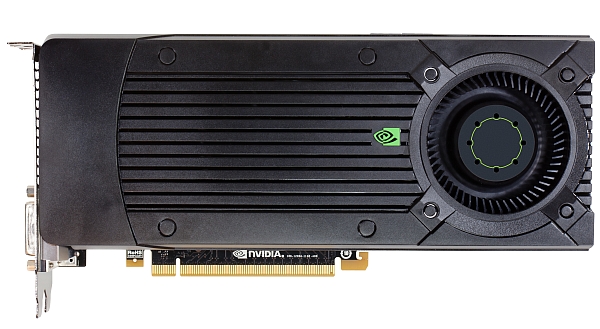
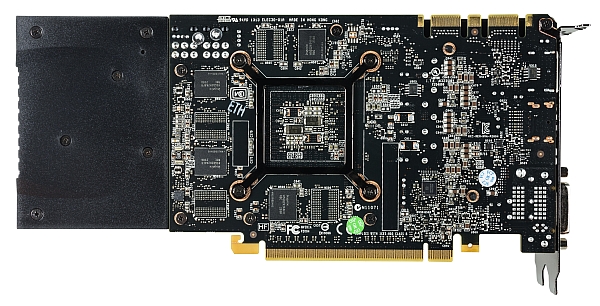
The GTX 760 Phantom card is 247mm long and 112mm high. Gainward uses a reference-like PCB. In order to provide a stable base for the bulky Phantom cooler Gainward decided to use a metal extension on the card, opposite to a plastic one used on reference boards.
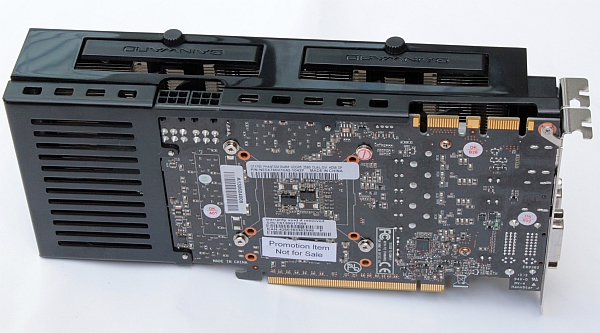
The GTX 760 Phantom card has 2GB of GDDR5 memory and all the memory modules are at the GPU side of the PCB. The memory comes courtesy of Hynix (model H5GQ2H24AFR-R0C) and it is specified to run at 1500MHz or 6000MHz GDDR5 effective.
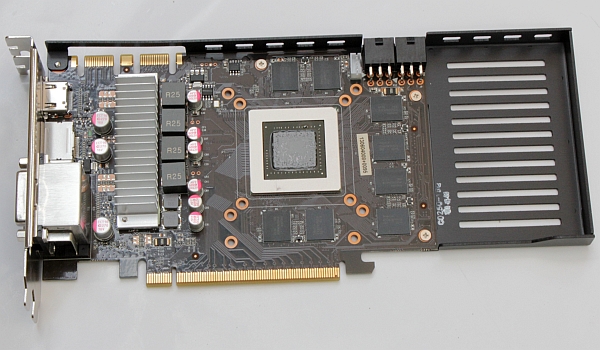
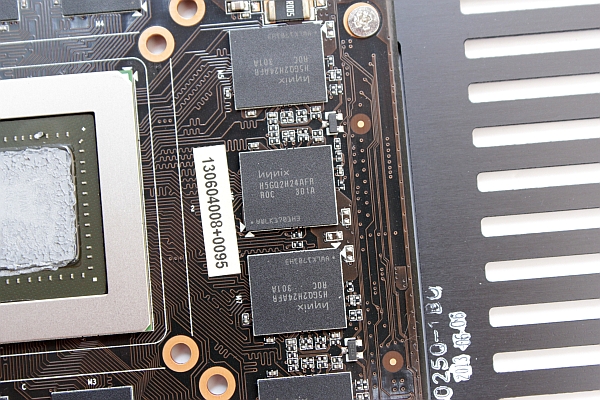
The GTX 760 Phantom is ready for multi-GPU setups. In addition to standard dual-SLI, it can also be used in triple- and quad-SLI setups, as it features two SLI connectors. It’s nice to see triple-SLI support, but we’re not sure it makes a lot of sense on what is still essentially a mid-range product.

As far as video outs go, what we have here is the classic Gainward Quattro-port design, i.e. two dual link DVIs, HDMI (1.4a compatible) and DisplayPort out. Note that all four video outs can be used simultaneously. Nvidia included an HDMI sound device within the GPU, so there is no need for connecting the card to your SPDIF out to get audio and video via HDMI.
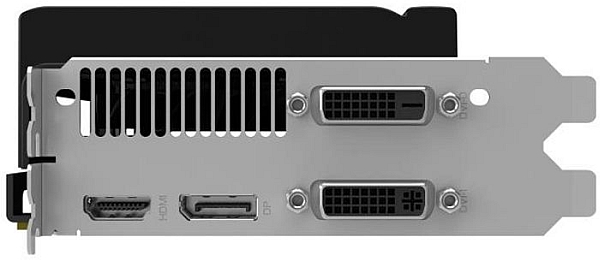
A combination of two 6-pin power connectors is used on the GTX 760 Phantom. The TDP for the reference card is 170W. The Phantom card uses an OnSemi NCP5392E voltage controller which does not offer i2C support for software voltage control.
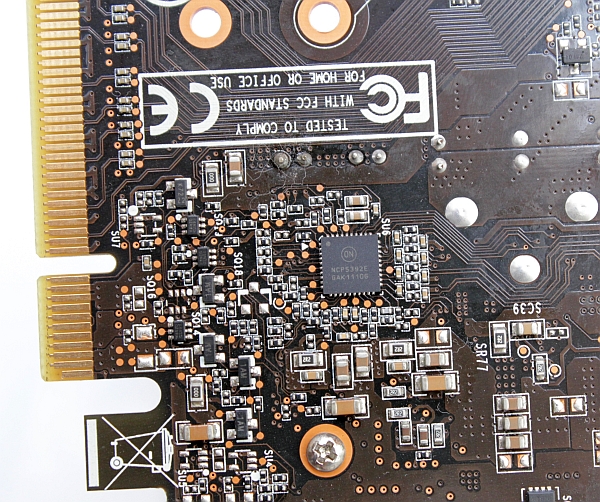
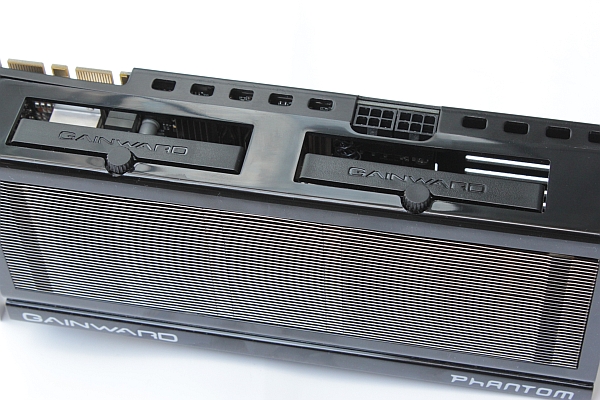
Testbed:
- Motherboard: EVGA Z77 FTW
- CPU: Ivy Bridge Core i7 3770 (4.5GHz)
- CPU Cooler: Gelid The Black Edition
- Memory: 8GB Corsair DDR3 2400MHz
- Harddisk: Corsair Neutron GTX 240GB
- Power Supply: CoolerMaster Silent Pro 1000W
- Case: CoolerMaster Cosmos II Ultra Tower
- Operating System: Win8 64-bit
Drivers:
- Nvidia 320.49
- AMD 13.6_Beta2
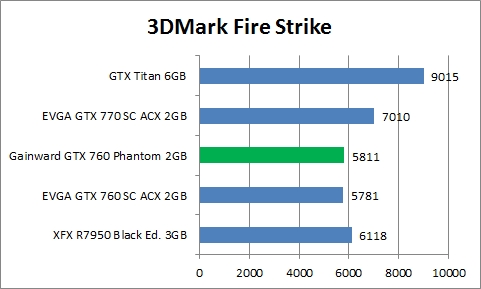
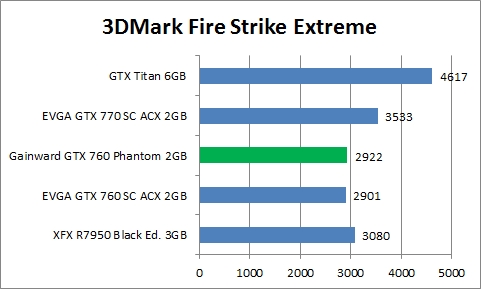
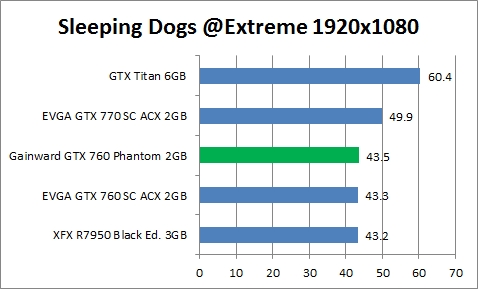
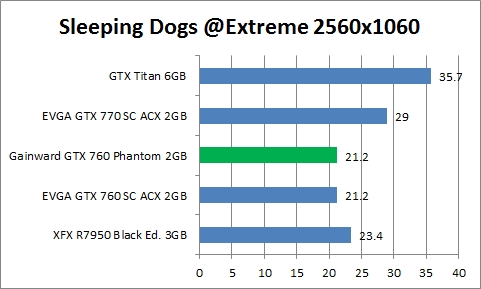
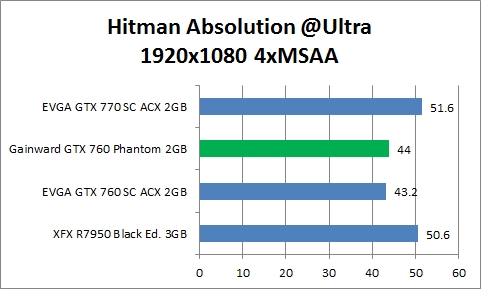
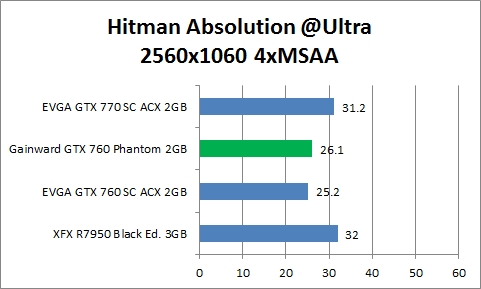
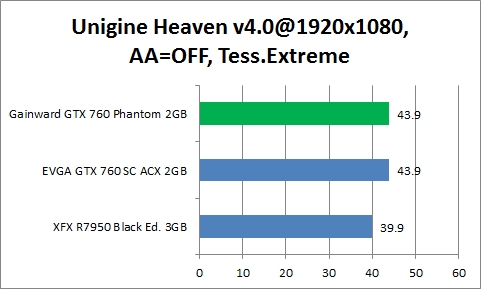
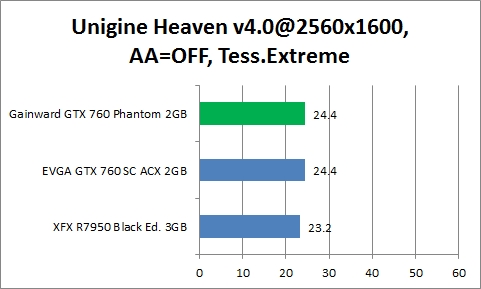
Geforce Experience is designed to make PC gaming easier for all gamers, and ShadowPlay, which is an upcoming Geforce Experience feature, lets gamers record their favourite gaming moments without the performance penalty of software-based solutions.
When GeForce Experience installs, it will scan your PC for supported games and list them in the client, along with optimal settings personalized to your PC. Gamers can then choose to optimize their games with the single click of a button. Better still, gamers can explore and learn about these settings via interactive screenshots built into GeForce Experience, allowing them to understand the benefits of enabling quality settings before launching the game.
For example, in Sleeping Dogs, Geforce Experience advised us how to increase the frame rate at 2560x1600. As you can see in the score charts, 69 FPS is a good result.
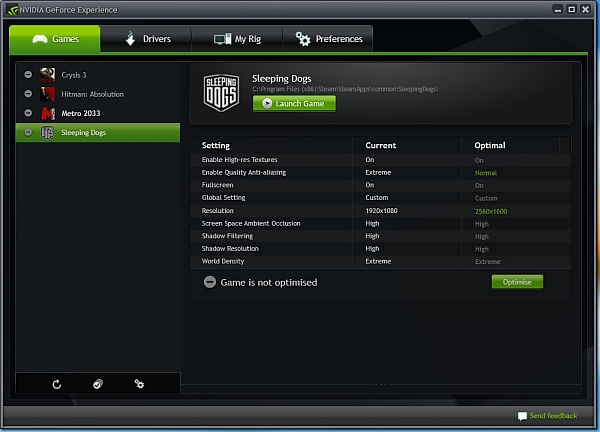
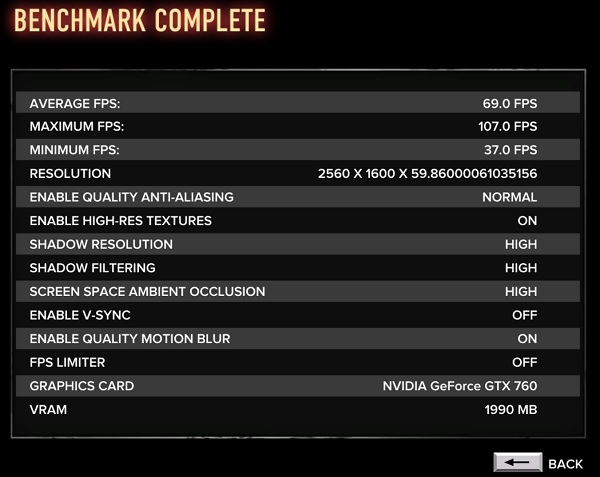
The Phantom cooler of the GTX 760 is superior to the reference cooler in terms of performance, but it is also quieter than the reference cooler. However, do note that the Gainward GTX 760 Phantom is factory overclocked.
The Phantom cooler keeps the GPU temperatures below 67 degrees Celsius, while the reference cooler keeps the GPU temperatures below 82 degrees Celsius. While idling or in 2D mode, the card is practically silent. The fans aren’t noisy even under full load. Note that the fan was in Auto mode throughout the test.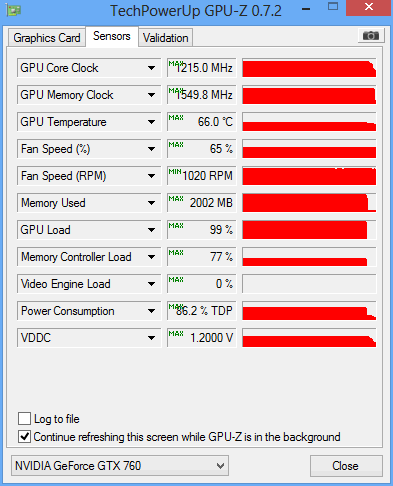
The GTX 760 Phantom is factory overclocked and the GPU clock is 1072MHz, while the memory is clocked at 1550MHz. The reference clocks are 980MHz and 1502MHz respectively. We didn’t have much luck when we tried to overclock the GPU, as we managed to boost the base clock by 20MHz, which was still enough for a top clock 112MHz higher than the reference clock.
Our memory overclocking test was a lot more eventful. We managed to push it up to 1800MHz and this resulted in a 4-percent performance gain.
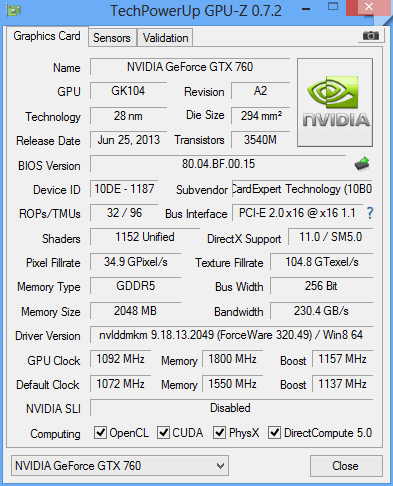
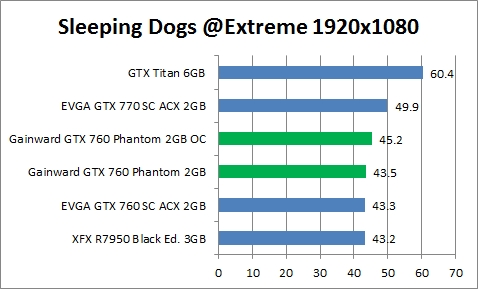
In terms of power efficiency, we can report that the GTX 760 Phantom draw a bit less juice than the EVGA GTX 760 SC ACX that has the exact same GPU clock. However, the GTX 760 Phantom is not as user friendly when it comes to the GPU overclocking.
Since only a small number of hardcore gamers can afford to pay more than €/$250 for a graphics card, most gaming is still done on mid-range cards. Of course, more powerful cards can deliver more eye candy, but for 1080p gaming the GTX 760 should meet the needs of most consumers.
Prices start at €220, which sounds like a decent offer in this market segment.
The GTX 760 Phantom has a couple of things going for it. First of all it is overclocked and the factory overclock is pretty impressive (92MHz). Secondly, its cooler performs very well indeed – and it’s quiet, as it doesn’t compromise on noise over performance.
But as always there are some downsides. The Phantom cooler uses a massive triple-slot cooler which makes it look pretty mean for a mid-range card, but then again a triple-slot cooler isn’t a great choice for all users. Furthermore, although the cooler has a lot of potential, the card is not a great GPU overclocker, hence the potential is wasted.
The memory was willing to party and we achieved a 250MHz (effective 1000MHz) overclock with relative ease.
If you’re after a decent mid-range card for 1080p gaming, the GTX 760 Phantom is worth a look.
The GeForce GTX 760 is practically replacing the GeForce GTX 660 Ti in Nvidia’s lineup, but like we said in our previous GTX 760 reviews, there is really no reason to upgrade from a GTX 660 Ti to a GTX 760. However, the GTX 760 is a good choice for gamers using older cards.
We liked the oversized cooler with easily accessible fans, and we also appreciated the relatively high factory overclock and since the Phantom costs just €10 to €15 more than a reference card, we still it’s a pretty good choice.
